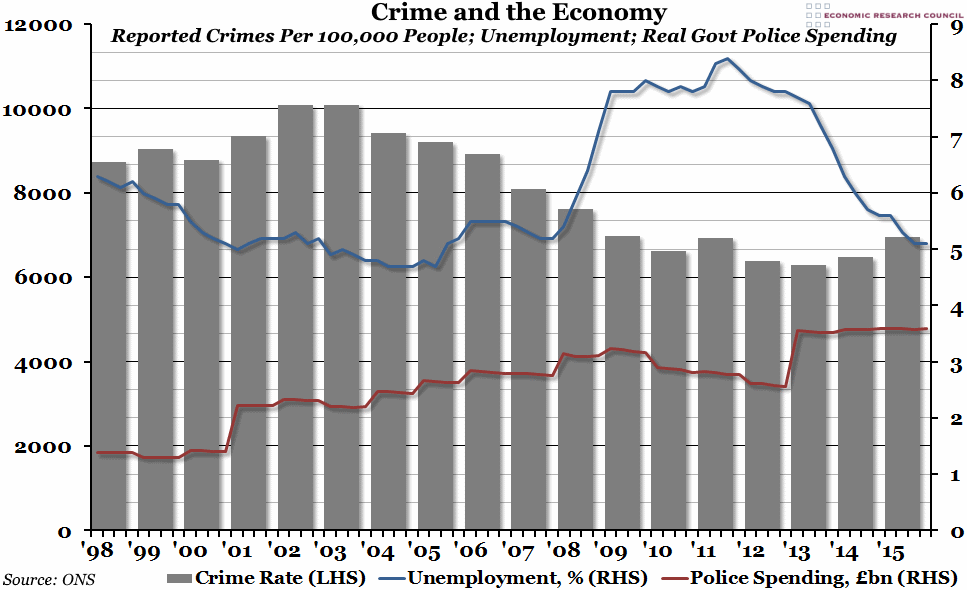
Summary
Despite the experience of the 1980s when crime rose sharply with unemployment, crime rates in the UK have remained static post the financial crisis despite large fluctuations in unemployment. The crime rate also appears to have been fairly independent of the level of police spending in this period.
What does the chart show?
The grey bars show the total number of reported criminal offences in the UK per 100,000 of the population in each financial year, measured against the left hand axis. The red line shows real government spending on the police in billions of pounds (adjusted for inflation by the official CPI measure), and the blue line shows the quarterly unemployment rate for everyone aged between 16 and 64 in percentage terms, both measured against the right hand axis.
Why is the chart interesting?
Unemployment rose significantly in the aftermath of the financial crisis, rising to over 8% in 2011 before falling back to 5% in recent times. Conventional wisdom, largely due to the experience of the UK in the 1980s, suggests that the crime rate should move in line with the unemployment rate. This has not been the experience of the UK post-recession – the crime rate has remained largely static despite the large fluctuations in unemployment. The crime rate has also been largely unrelated to police spending since the financial crisis.

